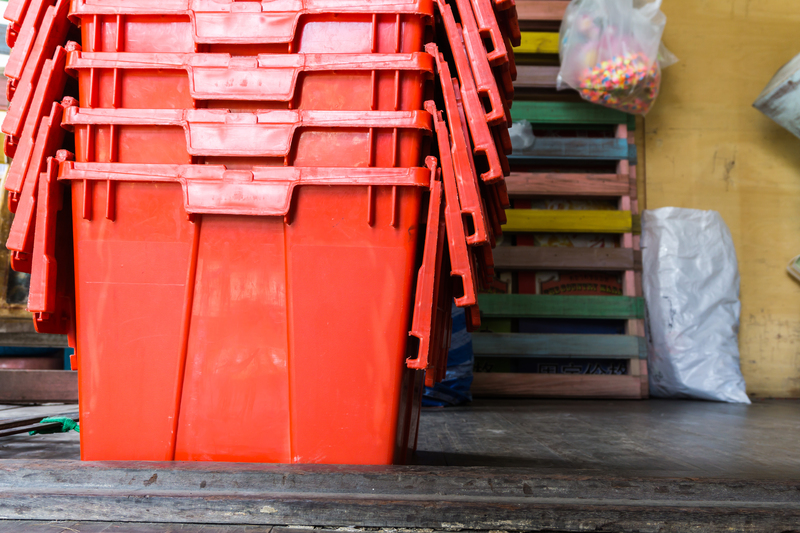Navigating the Challenges of Moving Your Bed and Mattress
Posted on 23/06/2025
Navigating the Challenges of Moving Your Bed and Mattress
Moving to a new home is an exciting adventure, but it comes with its own share of challenges. Among the trickiest items to relocate are your bed and mattress. These bulky, delicate pieces of furniture require careful planning and handling to ensure they reach your new abode in perfect condition. In this comprehensive guide, we'll explore the best practices for moving your bed and mattress, tips for packing and protecting them, and strategies to avoid the most common mistakes.
Why Is Moving Beds and Mattresses So Challenging?
Many people underestimate the challenges of moving beds and mattresses. Their size, awkward shape, and sensitivity to damage set them apart from other furniture. Let's review some of the key difficulties:
- Size and Weight: Mattresses and bed frames are often bulky and heavy, making them hard to maneuver through narrow doors and tight hallways.
- Structural Fragility: Mattresses can bend, tear, or get stained easily, while bed frames may have fragile or intricate components.
- Assembly/Disassembly: Moving beds often requires taking apart and rebuilding bed frames, which can be challenging if you've misplaced tools or hardware.
- Cleanliness Concerns: It's vital to keep your mattress and bedding clean during the move, as they can collect dirt, dust, or pests if improperly packed.

How to Prepare for Moving Your Bed and Mattress
Preparation is key to a successful bed and mattress move. Here's how to get started:
1. Take Measurements
Before moving day arrives, measure your mattress, box spring, and bed frame. Not only does this help you determine if they'll fit through doorways and hallways at your new place, but it also assists in selecting the right packing materials and transportation method.
2. Gather the Right Tools and Supplies
To make moving beds and mattresses easier and safer, collect the following supplies:
- Mattress bag: A heavy-duty plastic bag protects against dirt and moisture.
- Furniture sliders: Help move heavy frames across floors without scratching them.
- Allen wrenches or screwdrivers: For disassembling your bed frame.
- Moving blankets: Prevent scratches and dings on wooden or metal parts.
- Straps and tie-downs: Secure your load during transit.
- Packing tape and zip-top bags: Keep hardware safe and organized.
3. Clean and Inspect
It's smart to clean your mattress and bed frame before packing. Strip off all bedding and vacuum every surface thoroughly. Check for damage, pests, or stains that should be addressed before the move. Moving presents an ideal opportunity to deep clean and ensure you're bringing only healthy, high-quality furnishings to your new home.
Disassembling and Packing Your Bed Frame
The key to efficiently moving a bed is breaking it down into manageable pieces. Here's how to do it:
Step-by-Step Bed Frame Disassembly
- Remove bedding and the mattress: Strip down to the bare frame.
- Unscrew headboard, footboard, and side rails: Save all hardware in clearly labeled zip-top bags.
- Take photos: If the frame is complex, document each step for easier reassembly.
- Wrap wooden or metal components: Use moving blankets or bubble wrap to protect against nicks and scratches.
- Bundle parts together: Keep related pieces grouped--this saves time during reconstruction.
Special Considerations
Some beds, like bunk beds or beds with storage drawers, may require additional steps. Consult the manufacturer's instructions if you have them. If you're dealing with a particularly valuable or antique bed, consider hiring professionals to prevent damage.
Packing and Protecting Your Mattress
Your mattress is one of the most valuable and frequently used pieces of furniture you own. Treat it with care!
Choose a Quality Mattress Bag
Invest in a heavy-duty, tear-resistant bag sized to your mattress. These are essential for protecting your mattress against dirt, moisture, and accidental tears. If you're moving in rain or snow, an extra bag or thick tarp offers added protection.
How to Bag Your Mattress
- Slide the mattress gently into the bag, avoiding excess folding or bending.
- Seal the open end with packing tape but let the bag breathe to avoid trapping moisture.
- If using professional movers, let them know your mattress is bagged so they can handle it with extra care.
Transporting Beds and Mattresses: Truck or Moving Company?
Choosing between a DIY move and hiring professionals is a big decision. Let's weigh the options:
DIY Bed and Mattress Moving
- Cost-effective: Renting a moving truck is usually less expensive than using professional movers.
- Control: You pack and transport at your own pace.
- Logistics: Requires planning, physical effort, and sometimes assistance from friends or family.
Hiring Professional Movers
- Convenient: Movers have experience and the right equipment to handle bulky items securely.
- Less risk: Insurance typically covers any accidental damage.
- Services offered: Some companies provide specialty services, such as mattress crating or bed reassembly at your new home.
Whichever route you take, make sure your truck or van is large enough for the mattress and frame to lie flat without bending. Bending a mattress can internally damage its structure, leading to discomfort or voiding the manufacturer's warranty. Always transport your mattress flat if possible.
Moving Specialty and Oversized Mattresses
Certain types of mattresses require extra care. Here's how to handle:
- Memory foam mattresses: Always keep these flat, as folding can permanently deform the foam.
- Hybrid or pillow-top designs: Handle gently; keep away from sharp edges or heavy objects.
- Adjustable beds: Disassemble according to manufacturer instructions and keep all parts safe for reassembly.
If you have a California king or other oversized mattress, check that your truck or elevator can accommodate its length. Some professional movers offer custom solutions for such items.
How to Move a Mattress Without Damaging It
Follow These Key Tips:
- Have a team: Mattresses are cumbersome; always lift with two or more people to prevent bending.
- Use handles or moving straps: Many mattress bags include sturdy handles for safer carrying.
- Clear pathways: Remove obstacles in advance to minimize accidents or snags.
- Store upright briefly: If you must rest your mattress on its side, do so only for a short period and always on a clean, dry surface.
- Avoid sharp objects: Knives, tools, or even splintered wood can puncture mattress material.
Reassembling Your Bed at The New Location
Once you arrive, resist the urge to collapse on your mattress just yet. Reassembly is the last big hurdle in the bed and mattress moving process.
Step-by-Step Bed Setup
- Carefully unwrap all bed frame components.
- Arrange the frame in your desired spot.
- Use your saved hardware bags and notes/photos to reconstruct the frame.
- Ensure all bolts are tightened but avoid over-torquing.
- Move the mattress into position and remove its protective bag only after the frame is fully assembled.
Test the bed for stability. If you notice any creaks, wobbles, or missing parts, fix them now before adding your bedding.
What to Do with Old or Unwanted Beds and Mattresses
Moving presents an opportunity to upgrade your bedroom furniture. If you decide not to take your old bed or mattress, consider these eco-friendly options:
- Donate: Many charities accept gently used mattresses and bed frames.
- Recycle: Some cities offer mattress recycling programs that break down and reuse materials.
- Sell: Online marketplaces can help you rehome beds and mattresses in good condition.
- Arrange for proper disposal: If your mattress is beyond saving, contact your city's bulk pickup or landfill.
Tips for a Stress-Free Bed and Mattress Move
- Start early: Packing and disassembly can take longer than expected.
- Keep hardware organized: Labeled bags or containers prevent crucial screws from disappearing.
- Notify your movers: Tell them in advance about any oversized or specialty beds.
- Check insurance coverage: Protect your investment against possible damage in transit.
- Clean upon arrival: Wipe down your frame before reassembly for a truly fresh start.

Frequently Asked Questions
Can I fold my mattress to fit into a car?
No. Most mattresses, especially memory foam and hybrids, should not be folded or bent. Doing so can cause permanent damage to the internal coils or foam. Always use appropriate transportation or seek professional help for moving large-size bedding.
Do I really need a mattress bag?
Yes. A mattress bag is the best way to protect against dirt, water, and physical damage. If one is not available, use clean moving blankets and seal with plastic sheeting, but understand these are less effective than a dedicated bag.
How can I make moving a bed less physically demanding?
Use sliders and a dolly, and get help from friends or family. Don't risk injury--large or heavy beds should always be moved by at least two people.
Conclusion: Move Your Bed and Mattress the Right Way
Navigating the challenges of moving your bed and mattress doesn't have to be intimidating. With proper planning, high-quality materials, and a commitment to protecting your precious furnishings, you'll enjoy a safe, efficient, and even satisfying move.
Remember, your bed is where you spend a third of your life--don't cut corners when it comes to moving your bed and mattress. Follow the strategies above, stay organized, and you'll arrive at your new home ready to rest easy.
For more tips on moving, packing, and home organization, explore our related articles and resources. Wishing you a smooth relocation and restful nights ahead!



